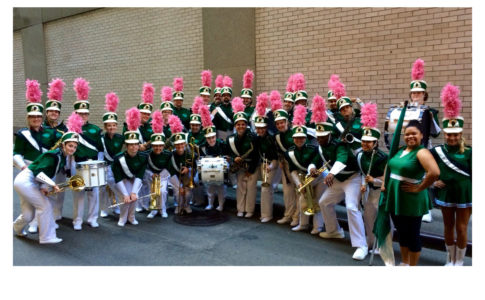Believe it or not, this article has nothing to do with the competitive side of color guard. In fact, it’s all about finding balance, a small break from the 5, 6, 7, 8’s of our lives. Guard culture is the perfect way to achieve this! All work and no play is not good for the guard.
Uniquely You
Every color guard has something it does that makes it unique. This group personality may be found in preshow rituals, traditions, guard wear, the manner in which members treat each other, or the way the whole group interacts with other color guards. This is called culture. The existence of culture makes your team distinctive and identifiable compared to its competitors and also to the student body at your school.
Many believe that instructors should initiate the culture. While somewhat true, the majority of a guard’s culture actually comes from the members themselves. Now is the perfect time to start new traditions, bond, and build a culture that makes your guard a team that people will want to be a part of.
Guard culture boils down to two things—social practices and identity—which members can absolutely initiate.
Social Practices
Here are some ideas that will allow your team to have fun and have balance in the midst of grueling rehearsals: secret sisters, dress-up themes, holiday celebrations, team meals, encouragement notes, pre-performance circle time or chants, movie nights, scavenger hunts, etc. The ideas are infinite.
Identity
Identity is all about being noticed as part of a team. Clothing or swag plays a role. Decide on team sweats or warmup clothes, printed T-shirts, or matching semiformal attire the day before performances. Also, behavioral uniformity can help. For example, always encourage your competitors, create a team cheer, or choreagraph a “stands dance” for football games, etc.
These are just a few ideas; the sky’s the limit when it comes to building a thriving guard culture. Think outside of the box and have fun with it. You will be surprised how adding culture can make your team work harder and work together.
About the Author
Chris Casteel has been involved in the color guard activity for the past 20 years. She is currently an adjudicator for Drum Corps International, Southern California School Band and Orchestra Association and the Winter Guard Association of Southern California (WGASC); she travels to many other circuits throughout the United States as a guest adjudicator. For the past four years, she has held the position of education coordinator for the WGASC. She has a master’s degree in education and currently teaches middle school language arts.


